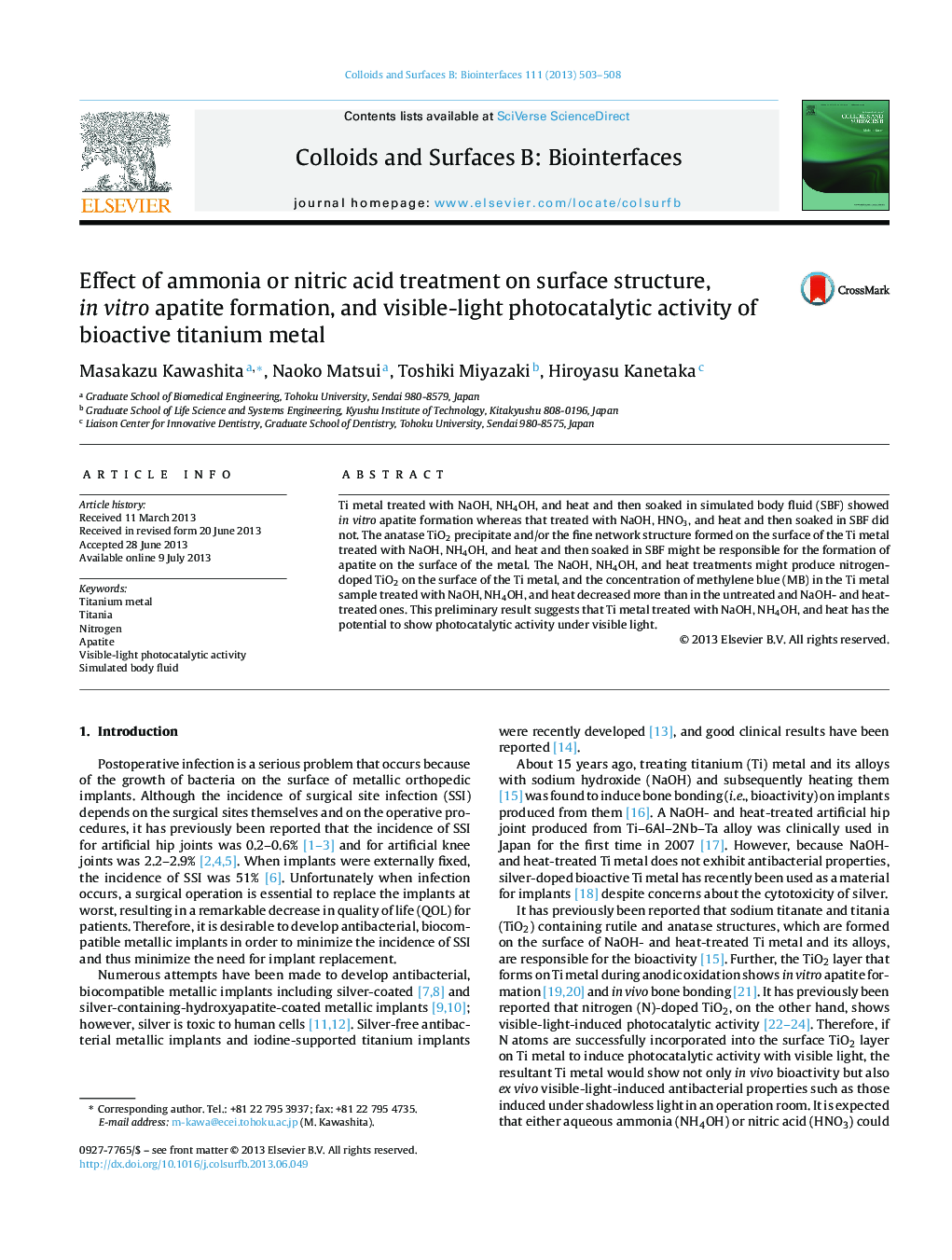| Article ID | Journal | Published Year | Pages | File Type |
|---|---|---|---|---|
| 599844 | Colloids and Surfaces B: Biointerfaces | 2013 | 6 Pages |
•Ti metal treated with NaOH, NH4OH, and heat formed apatite in simulated body fluid.•Nitrogen-doped TiO2 might be formed on the surface of the treated Ti metal.•The treated Ti metal decomposed methylene blue under visible light.
Ti metal treated with NaOH, NH4OH, and heat and then soaked in simulated body fluid (SBF) showed in vitro apatite formation whereas that treated with NaOH, HNO3, and heat and then soaked in SBF did not. The anatase TiO2 precipitate and/or the fine network structure formed on the surface of the Ti metal treated with NaOH, NH4OH, and heat and then soaked in SBF might be responsible for the formation of apatite on the surface of the metal. The NaOH, NH4OH, and heat treatments might produce nitrogen-doped TiO2 on the surface of the Ti metal, and the concentration of methylene blue (MB) in the Ti metal sample treated with NaOH, NH4OH, and heat decreased more than in the untreated and NaOH- and heat-treated ones. This preliminary result suggests that Ti metal treated with NaOH, NH4OH, and heat has the potential to show photocatalytic activity under visible light.
Graphical abstractFigure optionsDownload full-size imageDownload as PowerPoint slide
